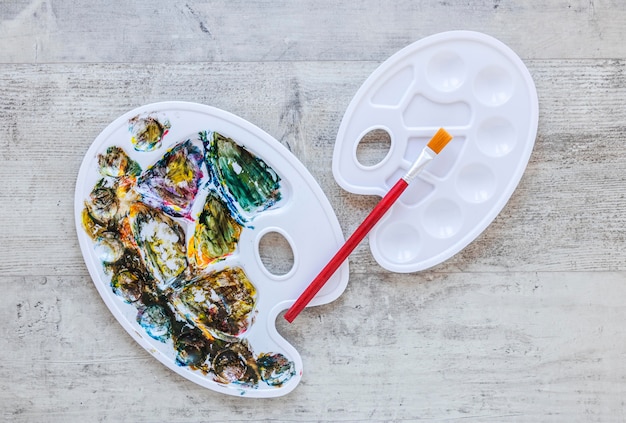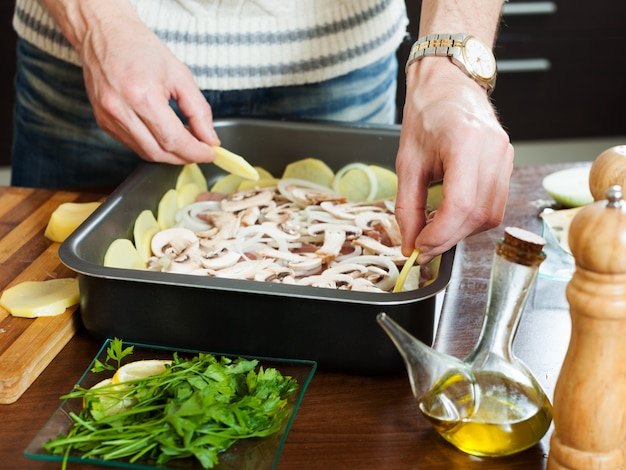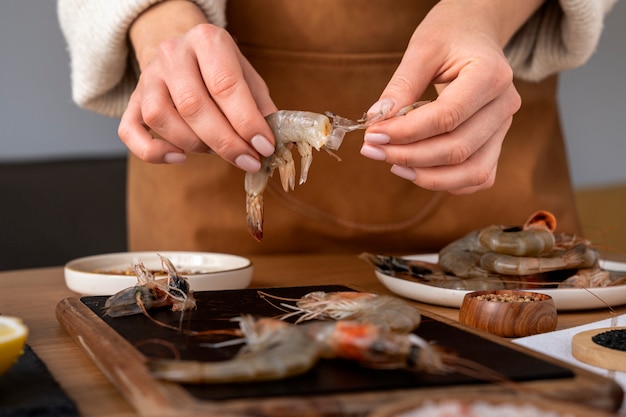Clams. They're those little treasures of the sea that, when cooked right, can transport you to a seaside haven. I've always had a soft spot for them. There's something incredibly satisfying about biting into a plump, juicy clam, tasting the essence of the ocean. Over the years, I've learned a thing or two about cooking them, and I'm here to share my knowledge with you. So, get ready to embark on a culinary adventure. We're going to uncover the secrets to choosing, preparing, and cooking clams, and along the way, I'll throw in some personal tips and tricks that I've picked up over the years. Grab a notepad, a bottle of white wine, and let's get started!
(Part 1) Picking the Perfect Clams: The First Step to Success

The key to a truly delicious clam dish starts with choosing the right clams. You want them fresh, vibrant, and bursting with flavour. Forget those limp, lifeless ones lurking in the back of the seafood counter - we're after the good stuff!
Identifying Freshness: A Gentle Tap and a Keen Eye
The first thing to check is the shell. It should be tightly closed, with no cracks, chips, or gaps. You want those little guys to be holding their breath, ready to burst with flavor. Here's a little trick I've learned: Give the clams a gentle tap. If they close up quickly, they're fresh. If they don't react, or worse, if they're gaping open, it's best to leave them on the shelf. You want clams that are eager to cook, not sluggish and ready to be discarded.
Types of Clams: A World of Flavour
Now, let's talk varieties. There's a clam for every occasion, and each offers a unique flavour profile.
First, we have the littleneck clam, a crowd-pleaser with a delicate, sweet flavour. They're perfect for steaming, grilling, or adding a touch of seaside elegance to your pasta dishes.
Next, the cherrystone clam is a bit bigger and bolder, offering a more robust flavour. These guys are perfect for chowders and stews, where their hearty essence can shine through.
For the adventurous, you can explore the world of littleneck clams. They're smaller than the others and offer an incredibly sweet, briny flavour. They're a true delicacy, often enjoyed in simple preparations to showcase their unique taste.
(Part 2) Cleaning Your Clams: A Must-Do Before Cooking

Freshly picked clams, unfortunately, aren't always sparkling clean. They live in the sand and mud, so it's crucial to give them a good scrub before cooking. You want to remove any grit or debris that might be hiding.
Soaking and Scrubbing: Removing the Sand and Grit
Fill a large bowl with cold water and gently add your clams. Let them soak for at least 30 minutes. This gives them time to purge any lingering sand or sediment. After soaking, drain the water and give the clams a good rinse under cold running water.
If you have a clam brush, use it to scrub the outside of the shells. It helps to get rid of any stubborn bits of sand or seaweed. If you don't have a brush, a good rub with your hands will do the trick. Just be sure to thoroughly remove any debris before you start cooking.
(Part 3) The Art of steaming clams: A Simple, Elegant Approach

Steaming clams is, in my opinion, the most straightforward and flavorful way to cook them. It allows the natural flavours to shine through and delivers a delicate, briny delight.
Essential Ingredients: Creating a Delicious Broth
You'll need a large pot with a steamer insert or a colander that fits snugly inside. For the broth, grab some white wine (a dry white like Sauvignon Blanc or Pinot Grigio works beautifully), a few cloves of garlic, some fresh herbs like parsley and thyme, and a squeeze of lemon juice for a touch of brightness.
Step-by-Step Guide: From Pot to Plate
- Pour the white wine into the pot and add the garlic, herbs, and lemon juice.
- Place the cleaned clams in the steamer insert or colander. Don't overcrowd them.
- Bring the liquid to a boil, then reduce the heat to a simmer.
- Cover the pot and steam the clams for about 5-7 minutes, or until they open. This is a sure sign they're cooked through.
- Remove the pot from the heat and discard any clams that haven't opened. It's best to play it safe and err on the side of caution.
- Serve the steamed clams immediately with crusty bread for soaking up the delicious broth. It's a truly satisfying experience.
(Part 4) Clam Chowder: A Classic comfort food
Ah, clam chowder. The ultimate comfort food. It's hearty, creamy, and packed with flavour. It's the kind of dish that warms you from the inside out, perfect for a chilly evening or a rainy afternoon.
Ingredients for a Classic Clam Chowder: Building the Flavour Base
For a truly classic clam chowder, you'll need a good stock of clams (fresh or canned), diced potatoes, onions, celery, bacon (for added richness), butter, flour (for thickening), milk, cream, and seasonings like salt, pepper, and a pinch of paprika.
Recipe for a Classic Clam Chowder: A Step-by-Step Guide
- Start by frying the bacon until it's nice and crispy. Remove it from the pan and set it aside. You'll be using the bacon fat to cook the other ingredients.
- Sauté the onions, celery, and potatoes in the bacon fat until they're softened and translucent.
- Stir in the flour and cook for a couple of minutes. This helps thicken the chowder. Then gradually whisk in the milk and cream.
- Add the clams, bacon, and seasonings. Bring the chowder to a boil, then reduce the heat and simmer for about 20 minutes, or until the potatoes are tender.
- Serve the chowder hot, with a dollop of sour cream or cream cheese for added richness, and a sprinkle of chopped fresh parsley for a touch of freshness.
(Part 5) Clams on the Grill: A Summertime Delight
Grilled clams. They're the epitome of summery seafood. Imagine the aroma of smoky, briny clams wafting through the air, the sun on your skin, and the sound of laughter and good conversation. It's pure bliss!
grilling tips: Creating the Perfect Grilling Environment
Start by preheating your grill to medium heat. You'll need a grilling rack that's specifically designed for clams, or you can create your own by placing a piece of aluminum foil on the grill and puncturing it with holes. If you're using foil, be careful not to tear it. The goal is to create a surface that supports the clams without letting them fall through the cracks.
Preparation and Cooking: A Quick and Easy Process
Before grilling, give the clams a quick rinse to remove any lingering sand. You can place a slice of butter on top of each clam for a rich flavour, or drizzle them with olive oil and sprinkle with a touch of garlic and herbs.
Grill the clams for about 5-7 minutes per side, or until they open. Serve them immediately, with a squeeze of lemon juice for a bright, tangy touch.
(Part 6) Clams in Pasta: A Mediterranean Delight
Clams and pasta. It's a classic pairing that never fails to impress. The briny flavour of the clams complements the richness of the pasta, and the combination is simply irresistible.
Choosing the Right Pasta: Matching the Texture to the Flavours
For a clam pasta dish, I prefer to use a thinner pasta like linguine or spaghetti. It holds the sauce beautifully and doesn't overpower the delicate flavour of the clams.
Ingredients for a Clam Pasta Dish: Creating a Simple but Delicious Sauce
You'll need a good stock of clams, garlic, white wine, olive oil, chopped fresh parsley, and a pinch of red pepper flakes for a touch of heat.
Recipe for a Simple Clam Pasta: A Quick and Easy Feast
- Sauté the garlic in olive oil until fragrant, then add the clams and white wine.
- Bring the mixture to a boil, then reduce the heat and simmer until the clams open.
- Cook the pasta according to the package directions. It's best to cook it al dente, so it has a bit of a bite.
- Drain the pasta and add it to the clam sauce.
- Stir in the parsley and red pepper flakes.
- Serve the pasta immediately, garnished with a sprinkle of Parmesan cheese for added flavour.
(Part 7) Clam Fritters: A Fun and Delicious Appetizer
Clam fritters are a delightful, easy-to-make appetizer that's sure to be a hit with your guests. They're perfect for parties, potlucks, or a casual snack.
Ingredients for Clam Fritters: A Simple and Flavorful Batter
You'll need chopped clams, flour, cornmeal (for a nice crunch), baking powder, salt, pepper, and eggs to bind it all together.
Recipe for Clam Fritters: Frying Up a Delicious Treat
- In a large bowl, whisk together the flour, cornmeal, baking powder, salt, and pepper.
- Add the chopped clams and eggs, and mix well until everything is combined.
- Heat a large skillet over medium heat and add a couple of tablespoons of oil.
- Spoon the batter into the hot oil, creating small fritters. Don't overcrowd the skillet.
- Fry the fritters for about 3-4 minutes per side, or until they're golden brown and crispy.
- Serve the fritters hot, with a dollop of tartar sauce or a squeeze of lemon juice for a tangy kick.
(Part 8) FAQs: Answering Your Clam-Related Questions
Now, I know you might have some questions about clams. I get it. They're a bit mysterious, those little guys. Let's address some of the most common ones.
1. Can I freeze clams?
It's not ideal, but you can freeze clams if you need to. It's best to freeze them raw, and they'll be slightly tougher after defrosting. Just make sure to remove them from their shells first, blanch them for a few minutes in boiling water to kill any bacteria, then freeze them in a freezer-safe bag or container.
2. How do I know if a clam is bad?
If a clam is gaping open, has a foul smell, or is discolored, it's best to discard it. fresh clams should be tightly closed, have a clean, briny smell, and a pearly-white or grayish-white color.
3. How long do clams last in the refrigerator?
Clams can be stored in the refrigerator for up to 3-5 days if they're kept in a sealed container with a damp cloth or paper towel. Just make sure they're not tightly packed, so they have room to breathe.
4. Can I cook clams in the microwave?
While it's possible to cook clams in the microwave, it's not recommended. The results can be inconsistent, and the clams might not cook evenly. Plus, you won't get that delicious broth that comes from steaming or simmering them.
5. What is the best way to serve clams?
The best way to serve clams depends on your personal preference and the occasion. You can serve them steamed, grilled, in chowder, in pasta dishes, or as fritters. The possibilities are endless, and each method brings out different aspects of the clam's flavour.
(Part 9) A Final Word on Clams: A culinary journey to Embrace
So, there you have it. My guide to cooking clams, from selecting the freshest ones to whipping up a delicious dish. It's a journey that's both simple and rewarding. Remember, the most important thing is to enjoy the process and to have fun with it. Experiment with different recipes, explore different clam varieties, and discover what works best for you. And above all, embrace the joy of cooking and the satisfaction of creating a truly delicious meal.
Everyone is watching

Prime Rib Roast Cooking Time Chart: Per Pound Guide
Cooking TipsPrime rib roast. Just the name conjures images of lavish dinners, crackling fires, and hearty laughter. It’s ...

How Long to Bake Potatoes in the Oven (Perfect Every Time)
Cooking TipsBaked potatoes are a staple in my kitchen. They're incredibly versatile, delicious, and surprisingly easy to m...

Perfect Rice Every Time: The Ultimate Guide to Cooking Rice
Cooking TipsAs a self-proclaimed foodie, I've always been a bit obsessed with rice. It's the foundation of countless cuisi...

The Ultimate Guide to Cooking Asparagus: Tips, Techniques, and Recipes
Cooking TipsAsparagus. The mere mention of this spring delicacy conjures up images of vibrant green spears, crisp and burs...

Ultimate Guide to Cooking the Perfect Thanksgiving Turkey
Cooking TipsThanksgiving. Just the word conjures up images of overflowing tables laden with delicious food, the scent of r...
